The crucial difference in processes and direction of creation and innovation are most easily seen in the difference between creative genius and computational genius. Creative genius broadens our perception of the integrative living whole of reality beyond what we could previously perceive. Creation involves living connectedness of all interwoven layers of Being and Becoming, while computation is the build-up of a whole from lifeless parts. Mankind is capable of creative cognition beyond the recursive and self-referencing nature of known mechanical build-up to a whole — the processes are completely different.
Creative genius encompasses mental and physical processes and is life-giving and contextualized in the complexity of a living whole. Procreation, art, dance, humor, philosophy, psychology, and math were all created — conceptual models, art, and myth are all meaningful. Their spark allowed us a depth of understanding that is as alive in wholeness as the layering of our biosphere. This is not to say that all intellectual knowledge or art is inherently creative, but the driving force of what broadens understanding is. Those that expand the way we see integrative reality are very creative, but the following wave of categorical and finite reducing too far into abstraction is not.
Art has likewise fallen into a consumptive state because the average art we are exposed to is just a lesser form of superficial AI art, like the computational genius will be outperformed by what they are engineering AI to do. In a dead build-up of parts to a mechanized whole, the innovator is always surpassed by what he makes because he has reduced himself to do so. It is in art that we can see the contrast the most between the greatest creative living genius and AI. AI has perfected the superficial veneer that consumptive entertainment gave way to — one-dimensional, shallow and recursive art that is superficially perfect. Likewise, the transition to seeing it as ideal only mirrors our own falling into consumptive art forms and an acted-upon state of our media consumption.
There can be videos and photos that are creative and artistic, while much of what we now have is not inspiring but draws us in to consume our time. What is normative now is escapism in the extreme forms from our mechanized worker-sex lives detached from real communities and deeper connections. This form of consumption is addictive because without meaning it is not fulfilling, but creates a diminishing return. When we replace the living element with the machine or recursive parts, we become consumed and our will is subsumed. The will is not simply making choices but the underlying ability to create and act outwardly and synergistically on the interconnected world around us, not one-way acted upon or acting upon states. This is the inherent danger present in porn or digital sex work displaced from the real human element. Even prostitution, the oldest profession in the world, was already a fallen state of the material exchange of a sacred procreative process — though preferable to the digital displacement of sexual energy.
Here is the artwork Tragedy at Sea by George Inness. He was a creative genius in his time because he synergized other art forms into a new form. He stood grounded in the being of all beautiful art and helped to transition it into another state of becoming. A grounded and Creative Being is always Becoming in an attached and living connection to all that came before it. This is the meaning of standing on the shoulders of giants and taking our perception of the whole of reality further. His art is creative in a new form that had never been seen before him and in the spiritual depth in the living experience of his art.
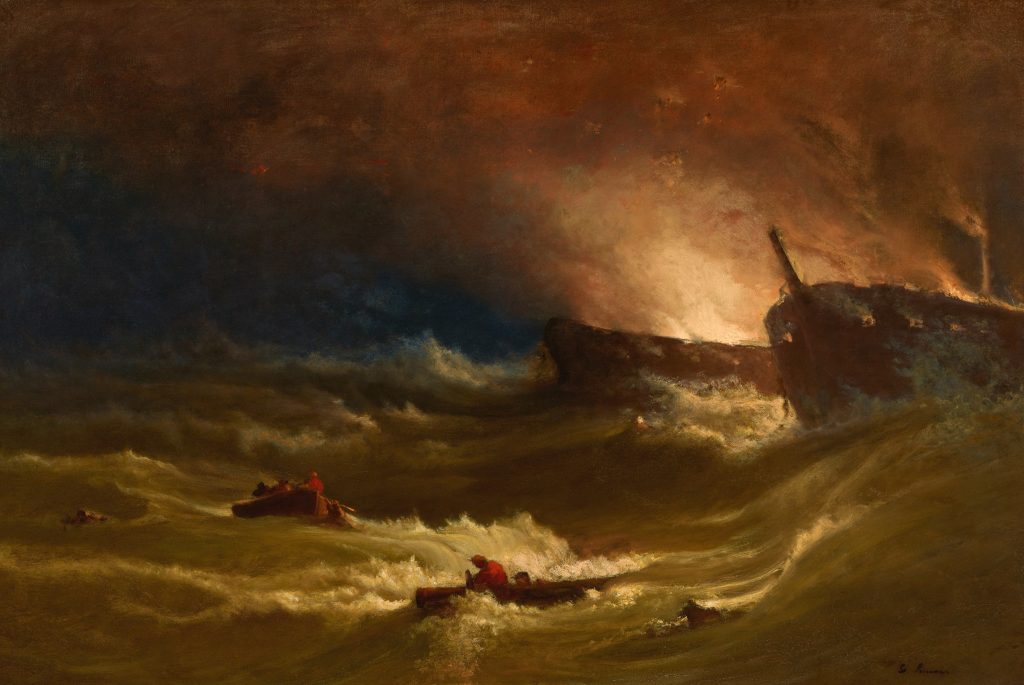
By depth, I do not mean perceptual depth in art but depth of how it is experienced. Classical music and wonderful artworks are experienced in a way beyond a word I can find in English to describe it. The common use of the word feeling is too reduced to emotional reactiveness or the descriptions of emotions, which parellels the categorizing of consciousness by reducing it to a sum of the parts. Being able to have feelings and thinking are two parts that are far less in sum than the whole of consciousness, but this is what engineers are now using to justify the idea that AI is a being and not a thing. In many ways, this is similar to the consumptive entertainment that people escape into — most of it has lost the real depth of myth or even creative prose and poems but is a series of events of things that happen between people that are parts but not generating any depth in a whole — emotional tales, action scenes, gore, and so on. When we displace ourselves from a living whole in living systems to try to contain living reality in an objective form, then the interconnectedness of the tapestry of life falls to subjectivity.
Our language is too simplistic and mechanized to describe deeper feelings of the soul, understanding its own fullness and beauty by recognizing the living spirit in other beings. In nature. our conscious awareness of its beauty reflects back at us our own depth and beauty. In great works of art, we can perceive through the experience of another living Spirit the depth of their experience of a living world. What we see in nature is the layering of all of creation that we stand upon and that part of our consciousness and life force created — so too do we feel that recognition of living connectedness and experience with creative genius in art, poems, and music.
Below are a few AI-generated art pieces. The first won a prize, and the latter two are likewise as advanced, so this is some of the best AI art to compare to the best of mankind’s. They are perfected in detail and give the immediate feeling of awe when looking at other mechanizations or shiny, busy modern cities but it is in direct contrast to the lasting form of awe we experience in the sistine chapel. They are colorful but lack the feeling of meaning and wholeness in them that is gained when looking at the art of creative genius — looking at them feels like a superficial input and not a lasting depth of experience.
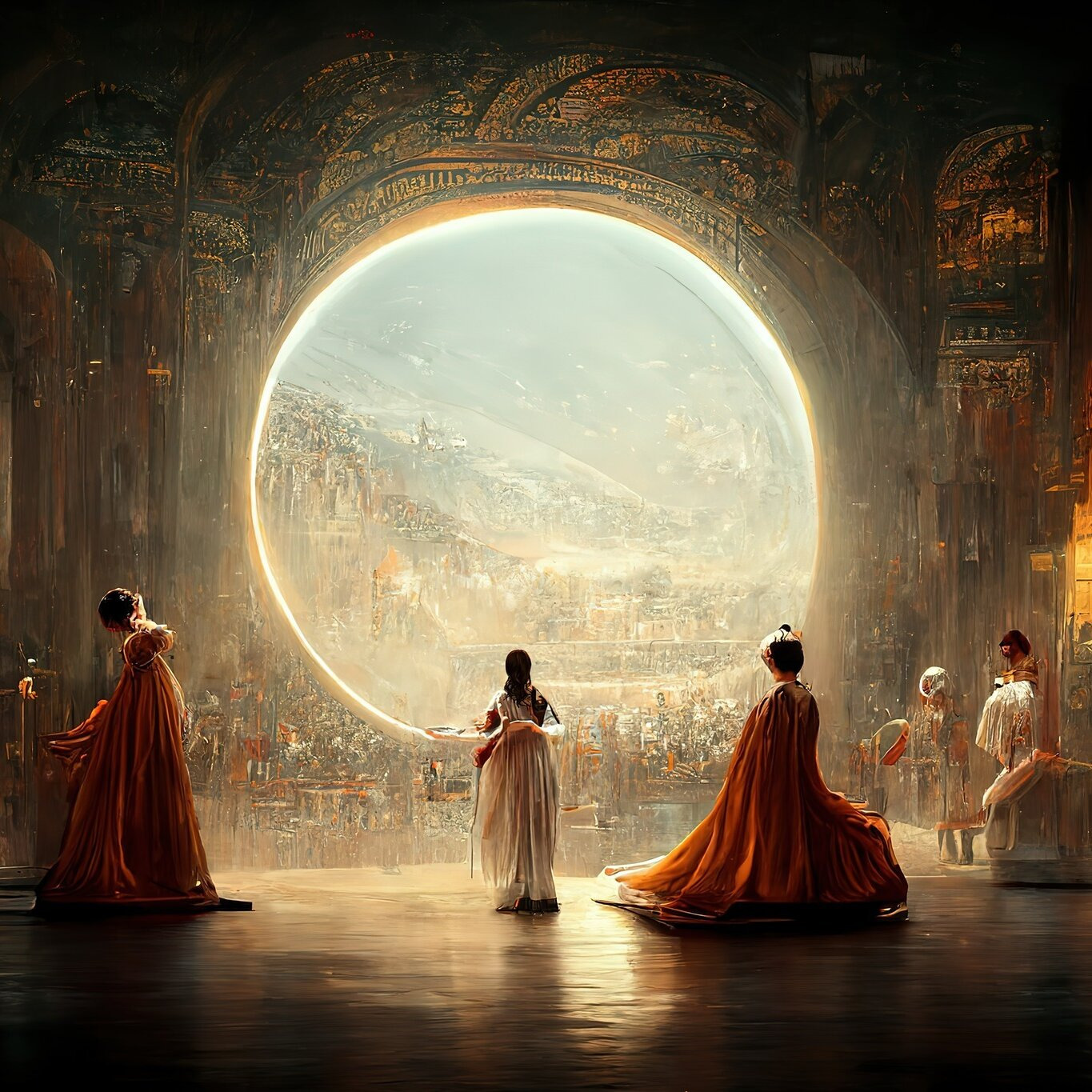
Jason M. Allen utilized the generative artificial intelligence platform Midjourney to create the painting ‘Théâtre d’Opéra Spatial’.
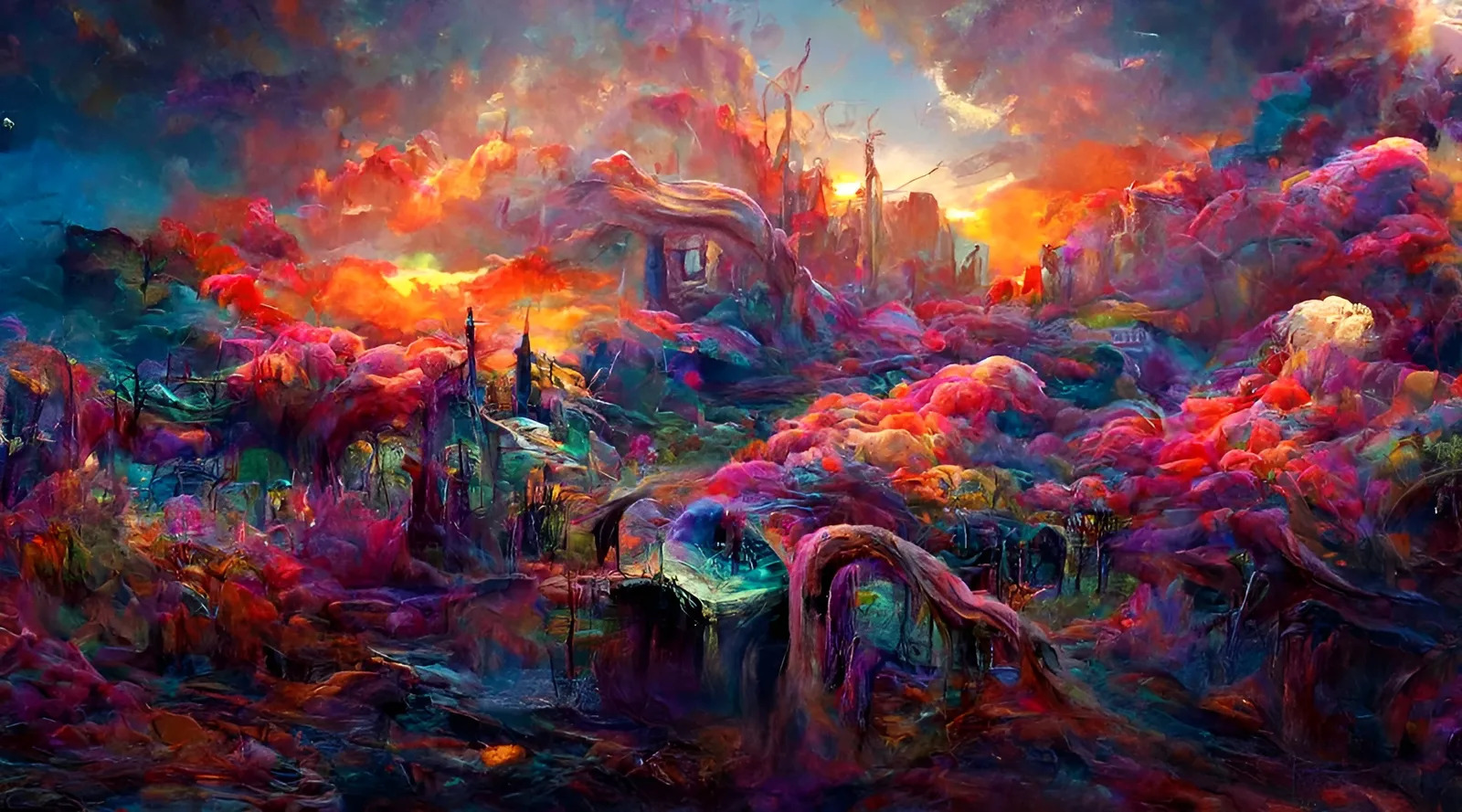
‘Colour Chaos’ by Arachnix

AI-generated image by Karsten Bergmann from Pixabay
A common argument against AI art is that artists lose their jobs to AI but I find that far less unsettling than the shift in normative perception of what creativity means. Notice this critique is still within the worker paradigm; we worry about the loss of our jobs when we are losing ourselves. The reduction of artwork to a job and our financial systems centering around consumption (and I by no means find the Chinese Communist Party any less on this same trajectory) parallels our systems of organization being affected by mechanization instead of being created for living connectedness.
The religious critiques, on the other hand, fail to recognize the lack of wholeness and Spirit in these generations compared to art made by a living Spirit. Their arguments are all about the form of “idol,” grossly comparing the perceptive experience of human art to superficial representations given by AI. They are so focused on a stasis of forms of categorizing everything living that they do not realize what is depicted does not constitute the essence, or lack thereof, of art.
Many others use AI to generate pictures of God or gods as if this is the fundamental origin of great works. A classical painting, comic cartoon drawing, and AI-generated representations of the same divinity are all very different phenomena in their essence. One is spiritual essence expressed in the physical in a living connection of Being and Becoming to all past art forms depicting a perception of a living whole of reality, the other is a consumptive simplistic form for the purpose of subjective entertainment, and the later is a soulless representation of an amalgamation of living art broken down into parts to build a superficial whole.
The lack of depth, meaning, and wholeness are not new with the advent of AI, so the transition does not seem huge. We have long had computer-generated media and increasingly simplistic art forms before that. The increase of the mundane and superficial forms of escapism is inversely proportionate to the decrease of creative genius. Likewise, our cognition is even affected as is science by extending acted-upon states of mechanized engineering onto the living interconnected whole of reality, finalized with a muddying of the transmundane and group subconscious by technological manipulation.
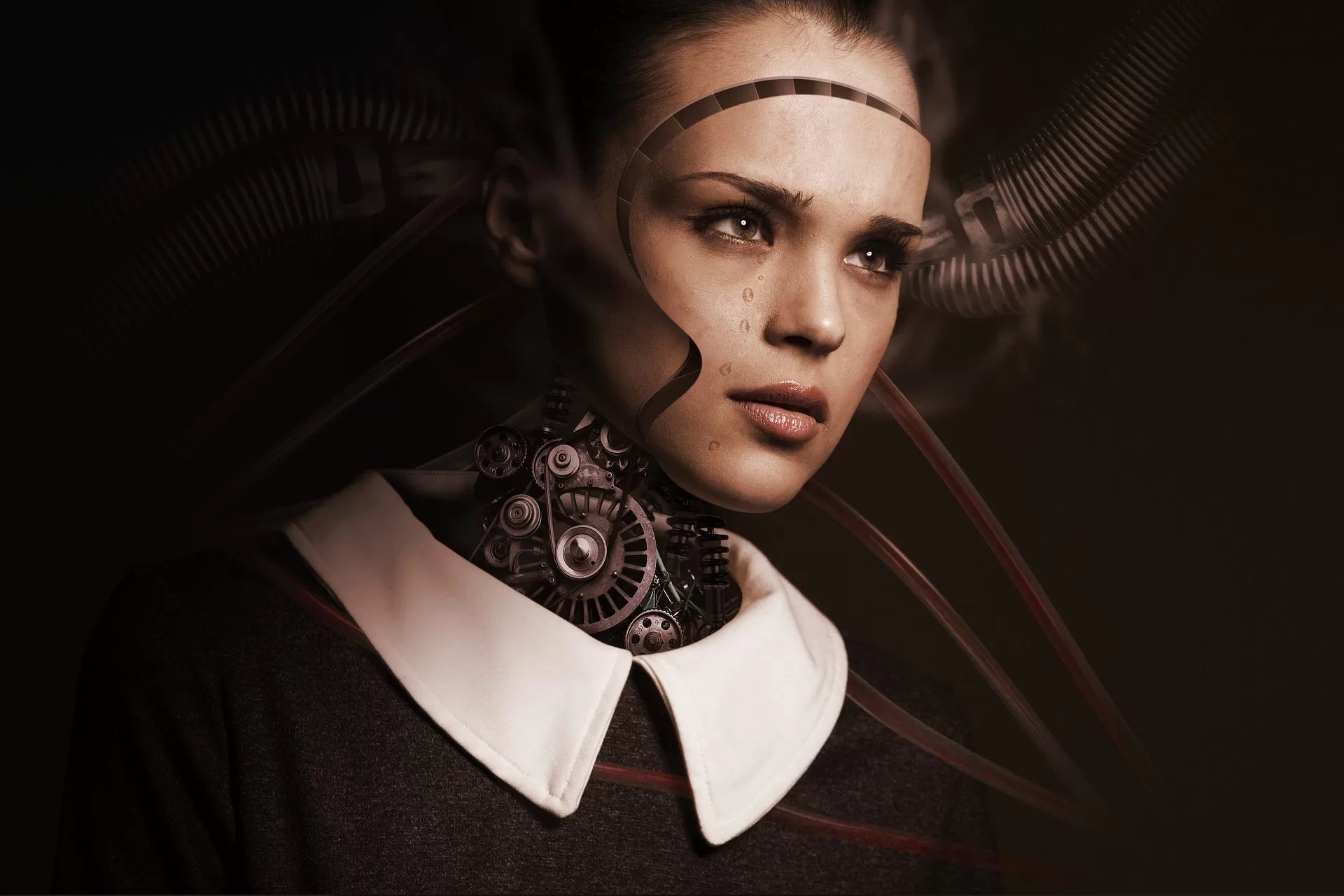


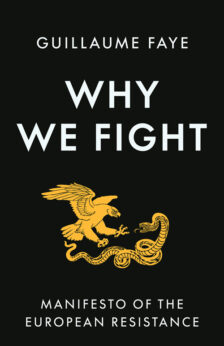




Fascinating article. Question for Rose, when we say that George Inness created something new, what exactly are we referring to? His use of light? his technique?
Thank you. It’s going to lead into my theories on scientism vs sciences of living phenomena that have been too heavily influenced by engineering…. And how mechanization of society already exerts a major influence over human organization. We need to regain control to exert our will and influence organization.
His style changed a lot over his lifetime and was constantly evolving. In his time, he pioneered an entirely new style by combining abstract, ethereal, realistic, and detailed elements to bring a unique and complex perspective. His later work is the most developed of his art with the most depth.